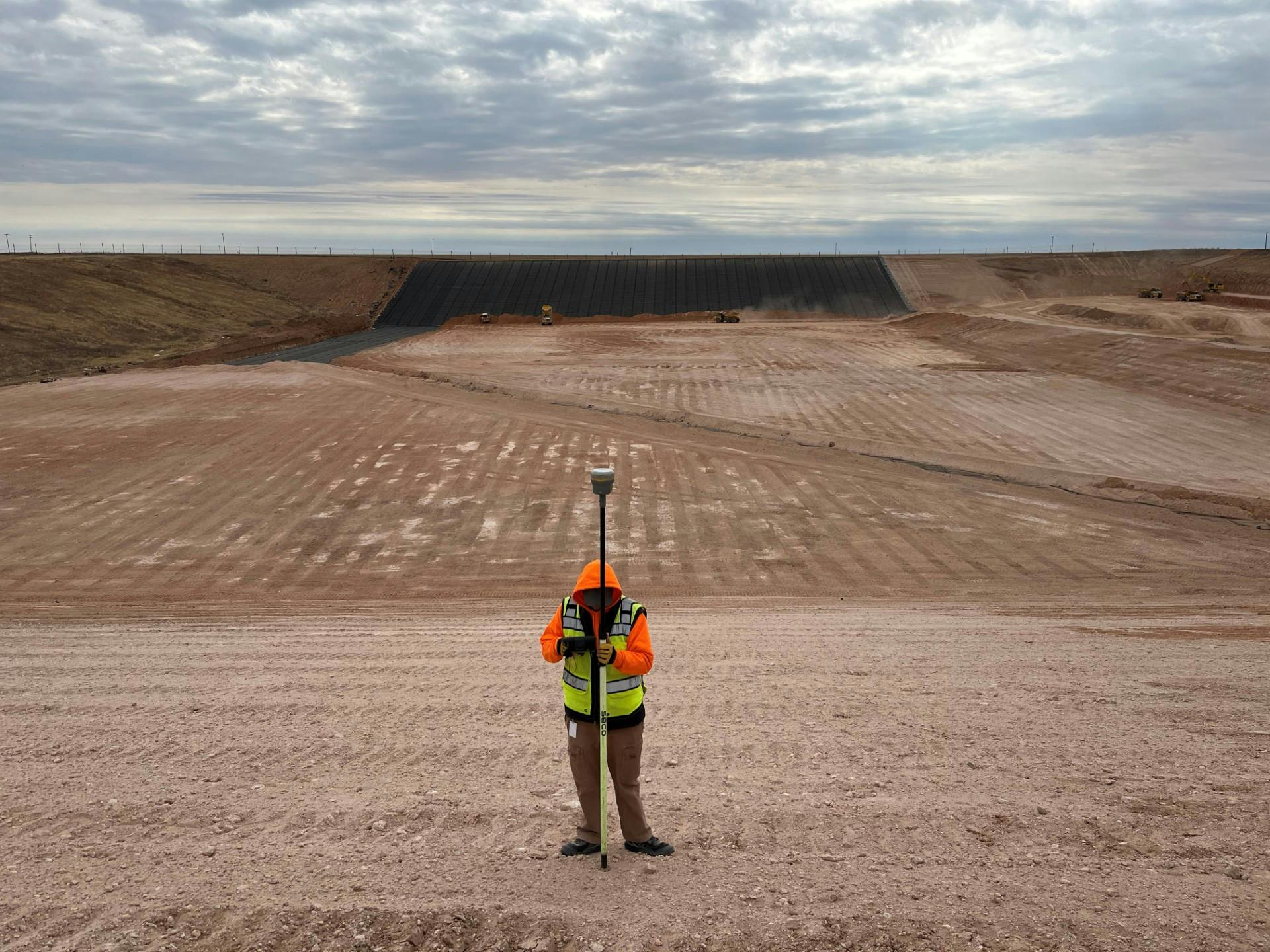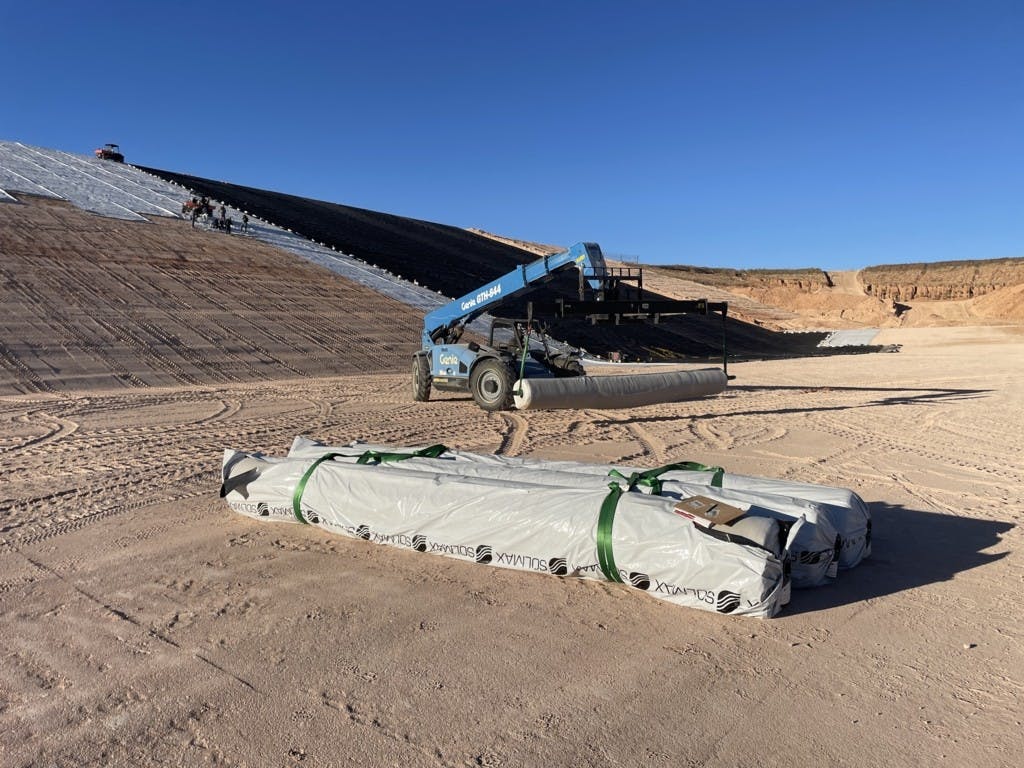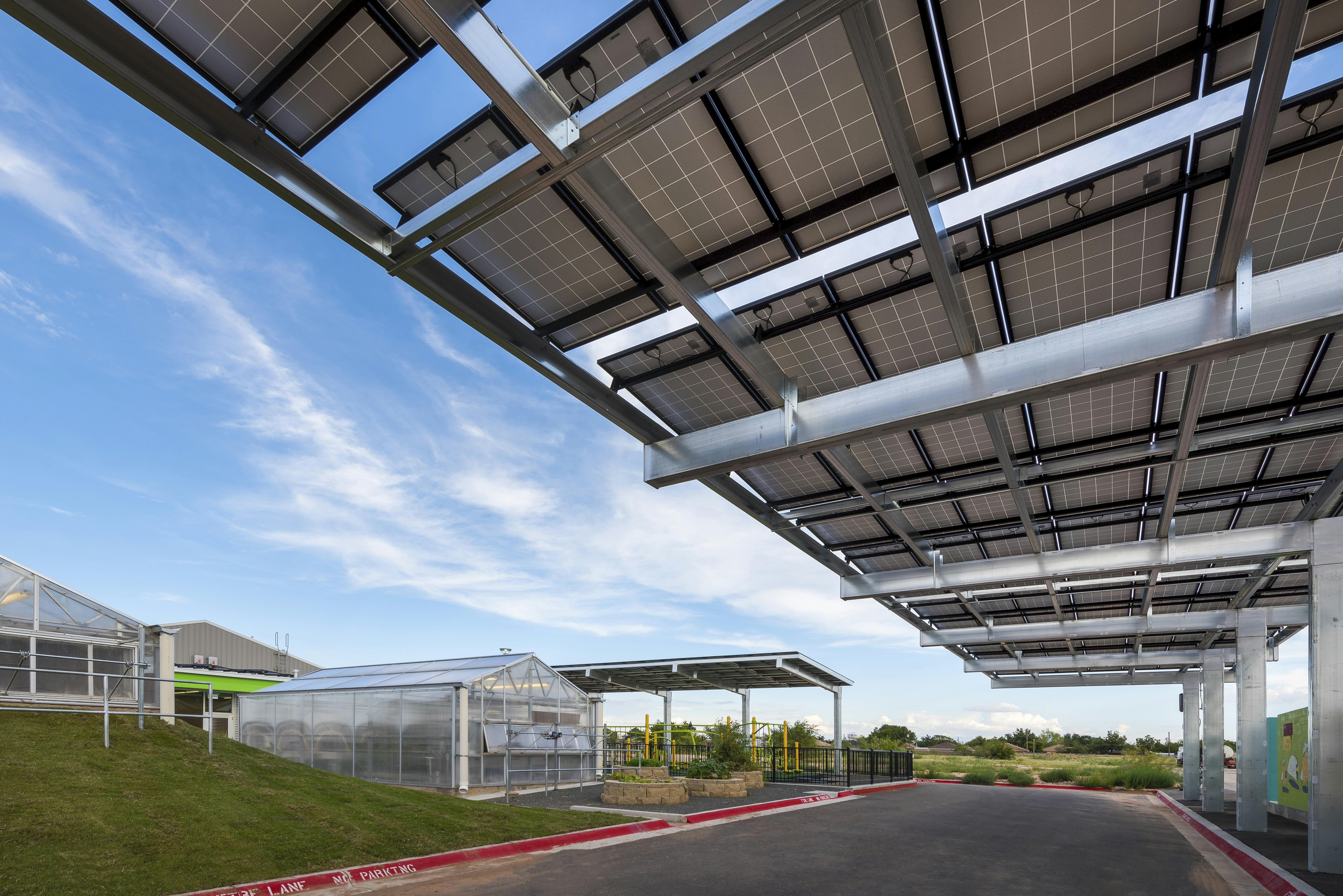How to Safely Extend the Life Cycle of a City Landfill
Category: Engineering
Written By: Spenser J. Harvey, PE
Date: December 10, 2023

Amarillo is the largest city in the Texas Panhandle with an estimated population of 201,000. Local tourism also adds millions of visitors every year. With a growing population and an influx of visitors, the demand for city services is increasing, including waste management.
The average American city generates one ton of waste per person per year, or roughly five pounds per person, per day. To mitigate the harmful effects of our waste, the modern sanitary landfill presents a solution for safe solid waste handling that protects both human health and environmental safety by utilizing a multilayer impermeable landfill liner. This feature prevents waste and liquids from entering our groundwater supply while ensuring the safe storage of waste for human health and the environment.
Landfill Expansion Solutions
The City of Amarillo Landfill has served the Central Panhandle community for more than 50 years. The constant movement of life in a growing metropolitan area yields an increasing quantity of solid waste generated by the community. Because of this, city officials need to find a fiscally responsible and environmentally safe solution for solid waste.
Today’s sanitary landfill represents a massive capital improvement project. A landfill begins its life at the permitting process to demonstrate compliance with the overseeing environmental agency’s regulations that ensure public health and environmental safety. During the design phase, a landfill is typically subdivided into sections to be built over the course of the landfill’s life. These sections are often referred to as “cells” and are delineated based on a cost-revenue basis. As a landfill cell’s area increases, so does the cost to construct the cell; however, the potential maximum revenue generated from the safe disposal of waste also increases. Optimally, a landfill cell should fully recuperate the cost of construction and operation while generating enough revenue to fund the construction of the next cell.
Once the excavation grade has been confirmed by a licensed surveyor, the entire area is lined with a landfill liner. A good landfill liner system is made of three composite layers:
- The first layer is a synthetic clay that acts as a protective layer preventing liquid releases to the natural soil and groundwater.
- The second layer is an impermeable geomembrane layer placed on top of the clay liner. The geomembrane prevents liquids in the waste from migrating further downwards.
- The third layer is a mesh like layer designed to assist liquids in migrating along the impermeable layer to a centralized sump. These liquids are then pumped from the sump and treated properly.
"During the design phase, a landfill is typically subdivided into sections to be built over the course of the landfill’s life. These sections are often referred to as “cells” and are delineated based on a cost-revenue basis."
Amarillo’s Cell 10
Parkhill, in collaboration with the City of Amarillo, is developing solutions to extend the life cycle of their landfill. The next phase of the facility is named Cell 10. This area consists of 23 acres that will accommodate 10 to 15 years of operational life. During the development, the cell is constructed to a grade permitted by the Texas Commission on Environmental Quality (TCEQ). The excavation of the landfill is based on geologic studies of the site, groundwater assessment, and determination of stability characteristics of the soil.
At Parkhill, our environmental engineering division leverages our extensive knowledge of modern sanitary landfills to ensure the safe collection of municipal and commercial refuse while also providing construction quality assurance for the landfill liner installation. These methods prevent illicit discharges of liquid and gases into the Panhandle’s key groundwater supplies. Parkhill representatives are onsite to observe, test, and record the results of the liner installation process. These field observations are then compiled into reports and submitted to the state environmental agency for final review and approval. Through Parkhill’s focus on project management and client relations, this 23-acre project schedule has gone seamlessly.
Continuing to Deliver Excellence
We will continue to work closely with the City of Amarillo as a trusted advisor to best utilize the projected 120 years of service life at the landfill with seven additional landfill cells to construct in the future. Parkhill focuses on aiding our clients with our clear vision beyond complexity and to focus on the long-term effect of massive capital improvement projects. An ill-advised decision today could result in years of lost service life and the loss of millions of dollars of municipal funds in the future.
The world of solid waste is not glamorous, but safe, sanitary, and sustainable solutions for proper disposal are essential for maintaining public health in a thriving community. With innovative cost-effective concepts, such as Cell 10, landfills can adequately keep up with growing populations for decades.

Spenser J. Harvey, PE, is a Civil Engineer for Parkhill's Environmental Practice. His experience includes a variety of landfill construction projects and industrial waste disposal facilities. With a high level of understanding in Computer Aided Design (CAD) programs, such as Civil3D, AutoTurn, and AutoCAD, Spenser has worked on several landfill cell design projects and site grading for construction for site in Texas and New Mexico. Spenser also has permitted several solid waste facilities in the state of Texas.






